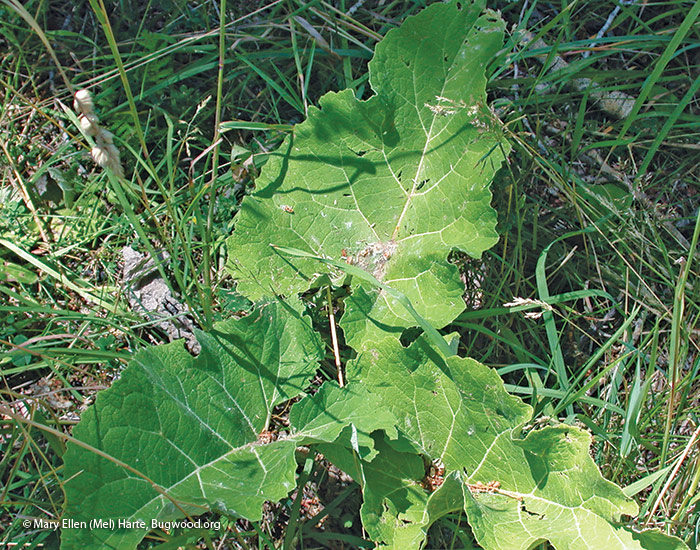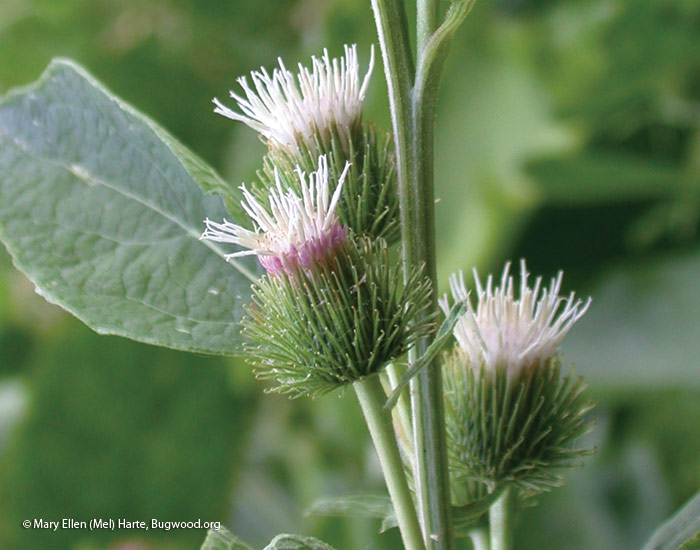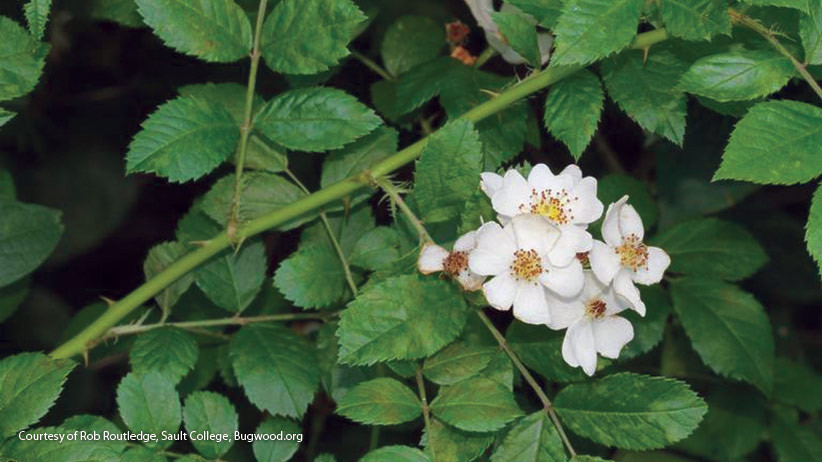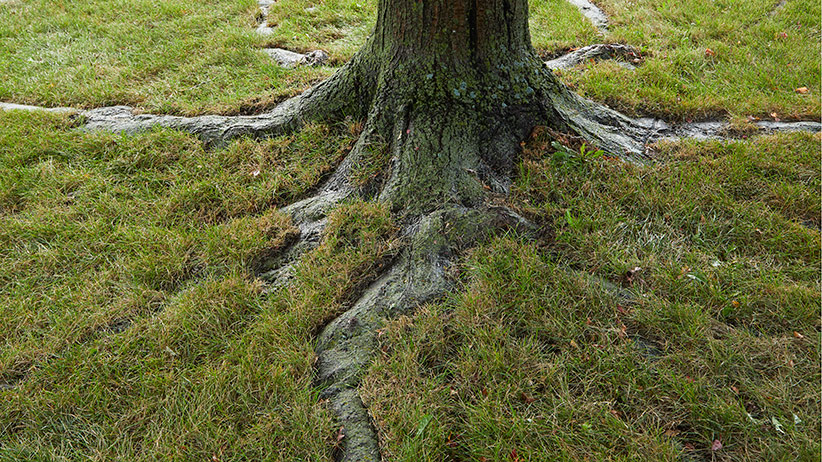
Common burdock (Arctium minus)
What does common burdock look like?
If you’ve ever walked through a patch of weeds and come out with brown spiky burrs stuck to your clothing, you know why you want to get rid of burdock! Common, or lesser, burdock is a biennial weed that grows as a low rosette of foliage in its first year, blooms and sets seed in its second year, then dies. Its large basal leaves are heart shaped and crimped along the margin like you see above.

Flowers & seedheads
The flower stalk can reach 6 feet tall, with pink or purple thistlelike flowers opening from midsummer to fall. As they fade, the flowers change into 3⁄4-in. fuzzy brown seed clusters, or burrs. The seedheads have hooks that attach to rough surfaces, like animal fur, aiding dispersal. After the plant dies, you can still identify this weed by the brown skeleton of branches and burrs that will stand all winter and into spring.
Where to find common burdock
Native to northern Europe, common burdock has spread across North America. Found across much of the United States and well into Canada, this weed is very adaptable. Full sun or shade, rich soil or poor, will suit it fine. Since it takes two years to produce seed, common burdock likes areas that are undisturbed. You’ll find it in shrub borders or along fences. Occasionally it sprouts in thin spots in your lawn, but mowing will usually keep it short with no seeds. Because common burdock grows so large in most spots, you want to get rid of it before it crowds out smaller plants nearby.
How to get rid of it
If you don’t get rid of first-year sprouts, your objective is to prevent seeds on second-year plants. Burdock has a deep taproot that’s hard to pull, and it resists herbicides. Chop plants off with a sharp spade or hoe below their basal leaves. However, root pieces in the soil will grow back, so repeat this process until the plant dies.
If you find burdock with flower buds, cut it down before they can open. Likewise, plants with seedheads should be removed before these can drop. With sustained effort you can eliminate a population, but remain vigilant. One plant can produce 15,000 seeds, which persist in the soil for years.
You May Also Like:
How to Get Rid of Weeds Without Pulling
The Ole Rhubarb Switcheroo | In the Weeds Humor Column
Helpful Gardening Books | The Garden Gate Store
More Tips to Control Garden Weeds
















